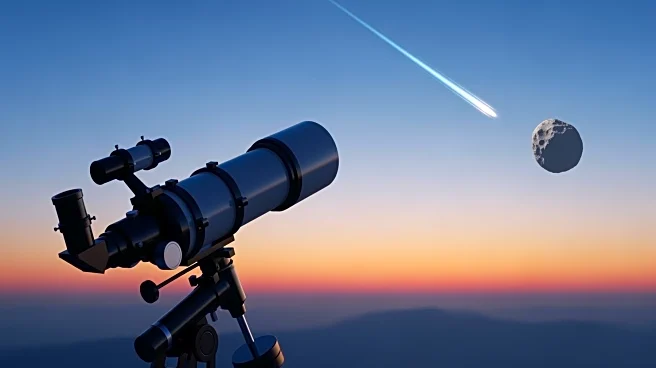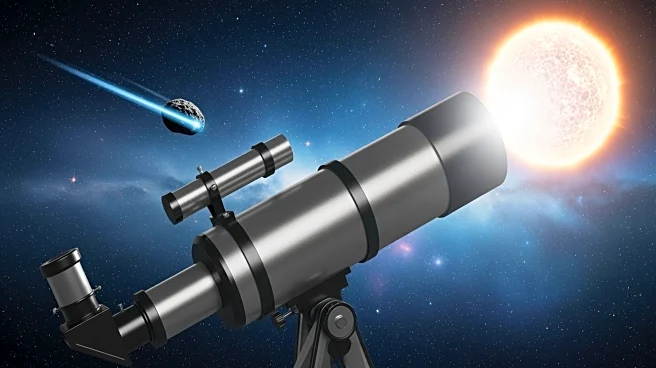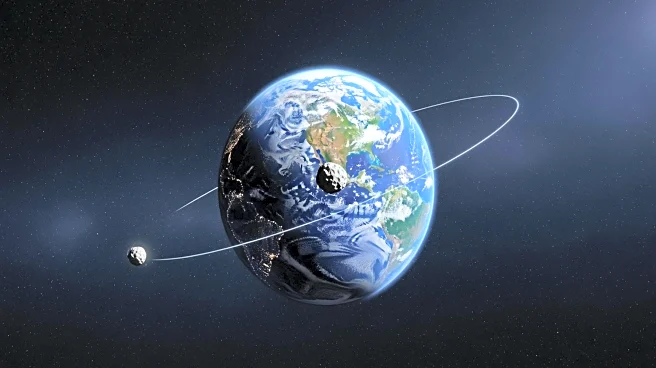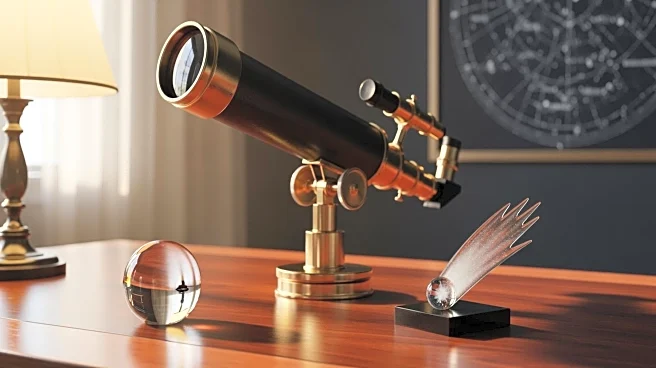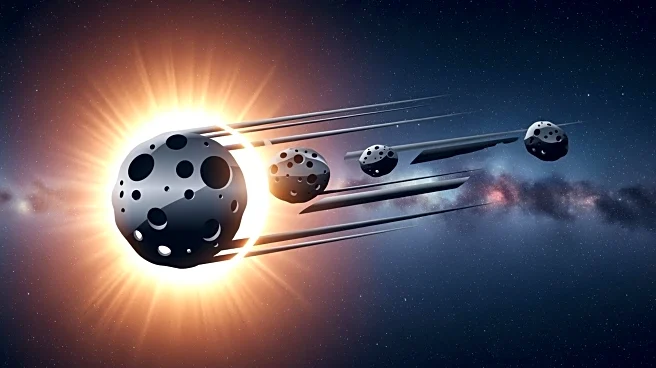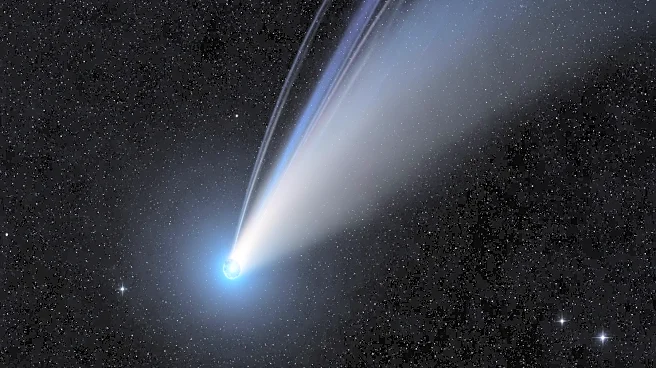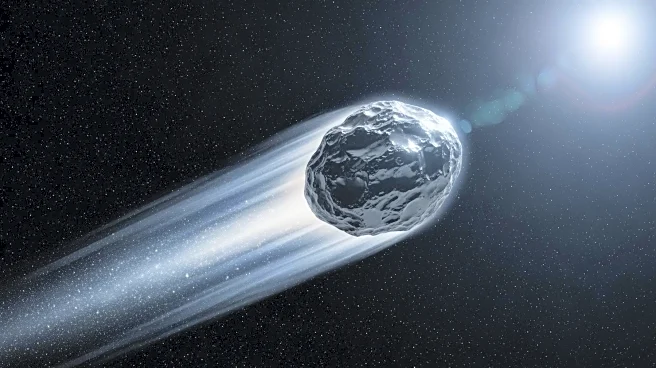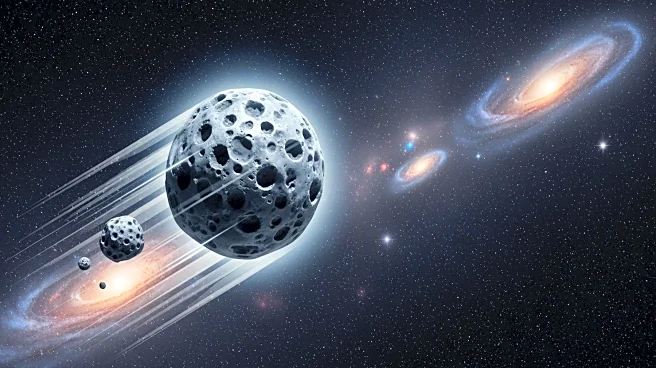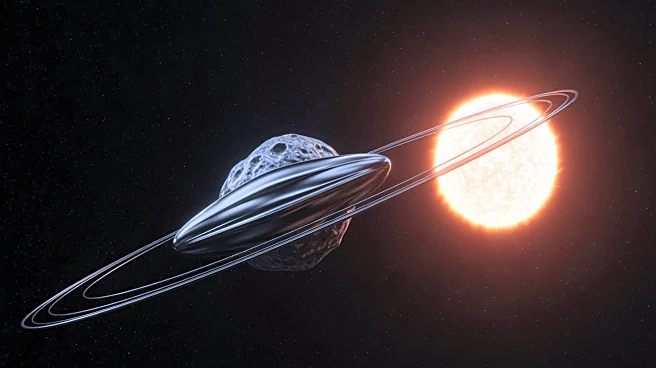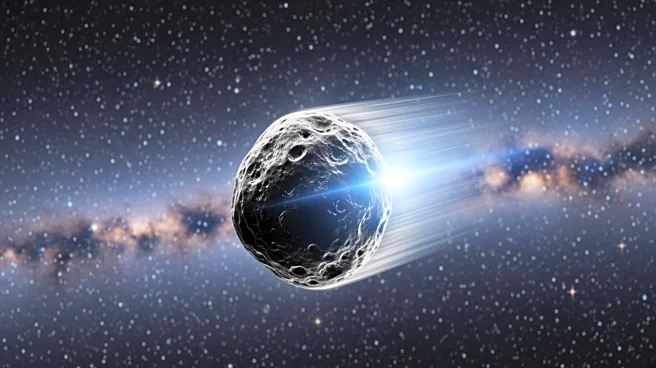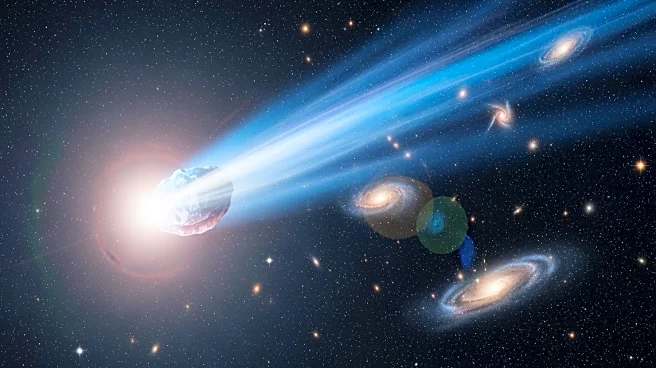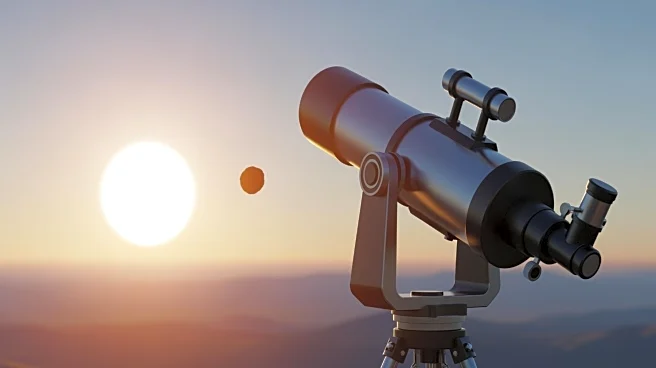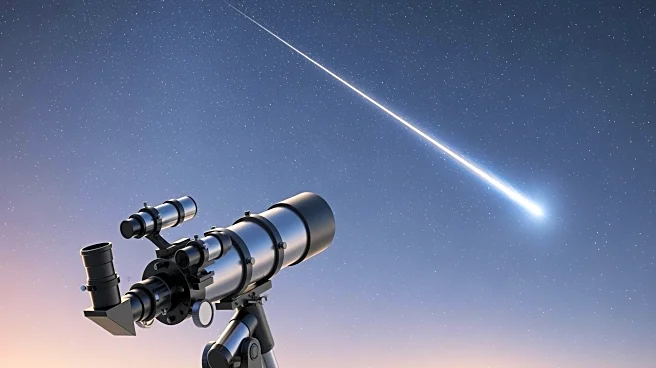What's Happening?
Astronomers have discovered a new twilight asteroid, designated 2025 SC79, which is the second-fastest asteroid ever identified, orbiting the Sun in just 128 days. This discovery was made by Scott Sheppard from Carnegie Science using the Blanco 4-meter
Telescope’s Dark Energy Camera, with follow-up observations by the Gemini and Magellan telescopes. Twilight asteroids are difficult to detect due to their position behind the Sun's glare, posing a potential impact hazard if they approach Earth. The asteroid measures approximately 2,300 feet in diameter, qualifying it as a 'planet killer' due to its size and speed.
Why It's Important?
The discovery of 2025 SC79 underscores the challenges astronomers face in detecting asteroids that orbit close to the Sun. These twilight asteroids are particularly dangerous because they are difficult to spot until they are very close to Earth. The potential impact of such an asteroid could be catastrophic, making it crucial for astronomers to develop better detection methods. Understanding the composition and trajectory of these asteroids can help in devising strategies to mitigate potential threats, thereby protecting Earth from possible future impacts.
What's Next?
Further research and observation of 2025 SC79 are needed to understand its composition and trajectory better. This could provide insights into spotting similar asteroids in the future. The scientific community may push for enhanced detection technologies and international collaboration to monitor these celestial objects more effectively. Additionally, public awareness and preparedness strategies might be developed to address potential asteroid threats.
